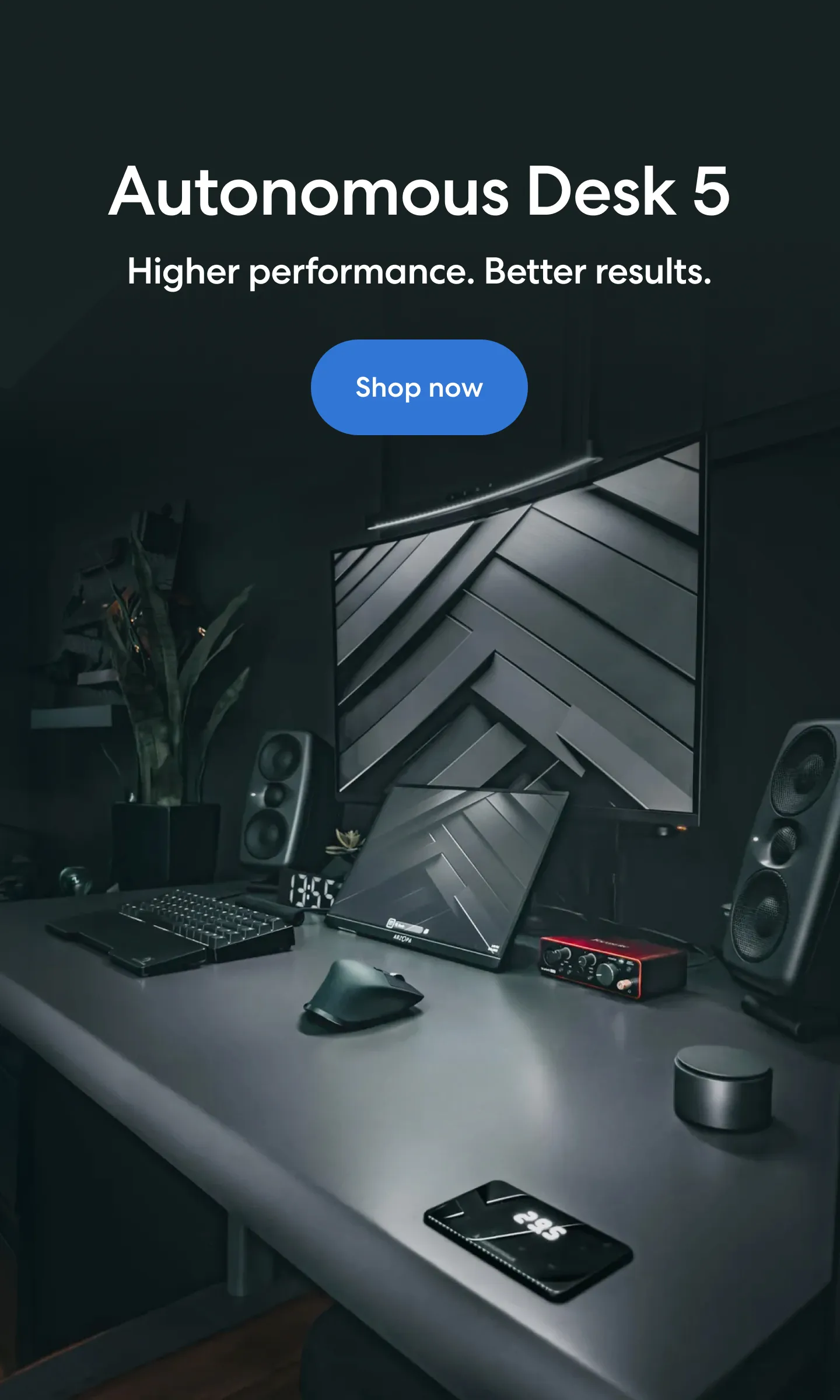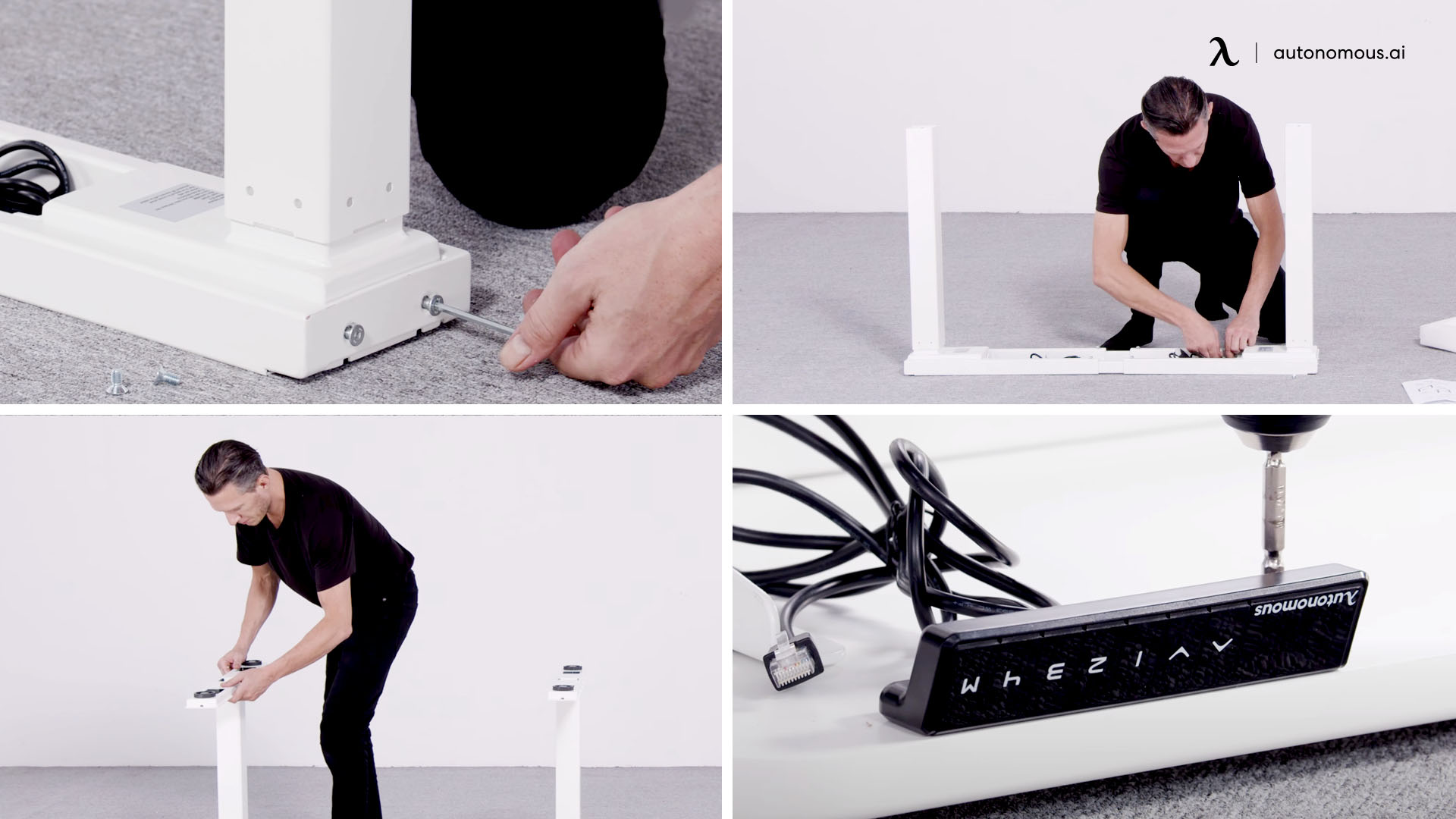
Standing Desk Mechanism: What Are Desk Lifts in Ergonomics?
Table of Contents
Standing desks are becoming increasingly popular, especially with the growing awareness of the health risks associated with sitting for prolonged periods. But while standing for hours is not ideal either, the best solution is a sit-stand desk that allows you to alternate between sitting and standing throughout your day.
The key component behind these desks is the adjustable desk mechanism, a part of the desk that’s often overlooked. Instead of focusing on the desk’s surface or features, understanding the mechanism that makes your desk adjustable is crucial for a smarter purchase. In this guide, we’ll break down the various types of adjustable desk mechanisms to help you make an informed decision for your workspace.
What Is a Standing Desk Mechanism?
The standing desk mechanism refers to the internal components that allow the desk to change height. It enables you to alternate between sitting and standing positions, promoting better posture, reducing fatigue, and encouraging movement.
There are several types of standing desk mechanisms, each designed to suit different preferences and budgets. When considering a standing desk, one important factor to think about is the ideal height for your desk, which is crucial for both sitting and standing positions to maintain comfort and posture.
For those new to adjustable desks, it’s important to understand the ergonomic benefits. You can read more about the ergonomics of standing desks to ensure you’re using your desk in the healthiest way possible.
Standing desks also offer several advantages over traditional sitting desks. If you're curious about how the two compare, check out our article on standing desk vs sitting desk.
Lastly, if you're looking for the best options, explore our recommendations for both luxury standing desks and budget standing desks.
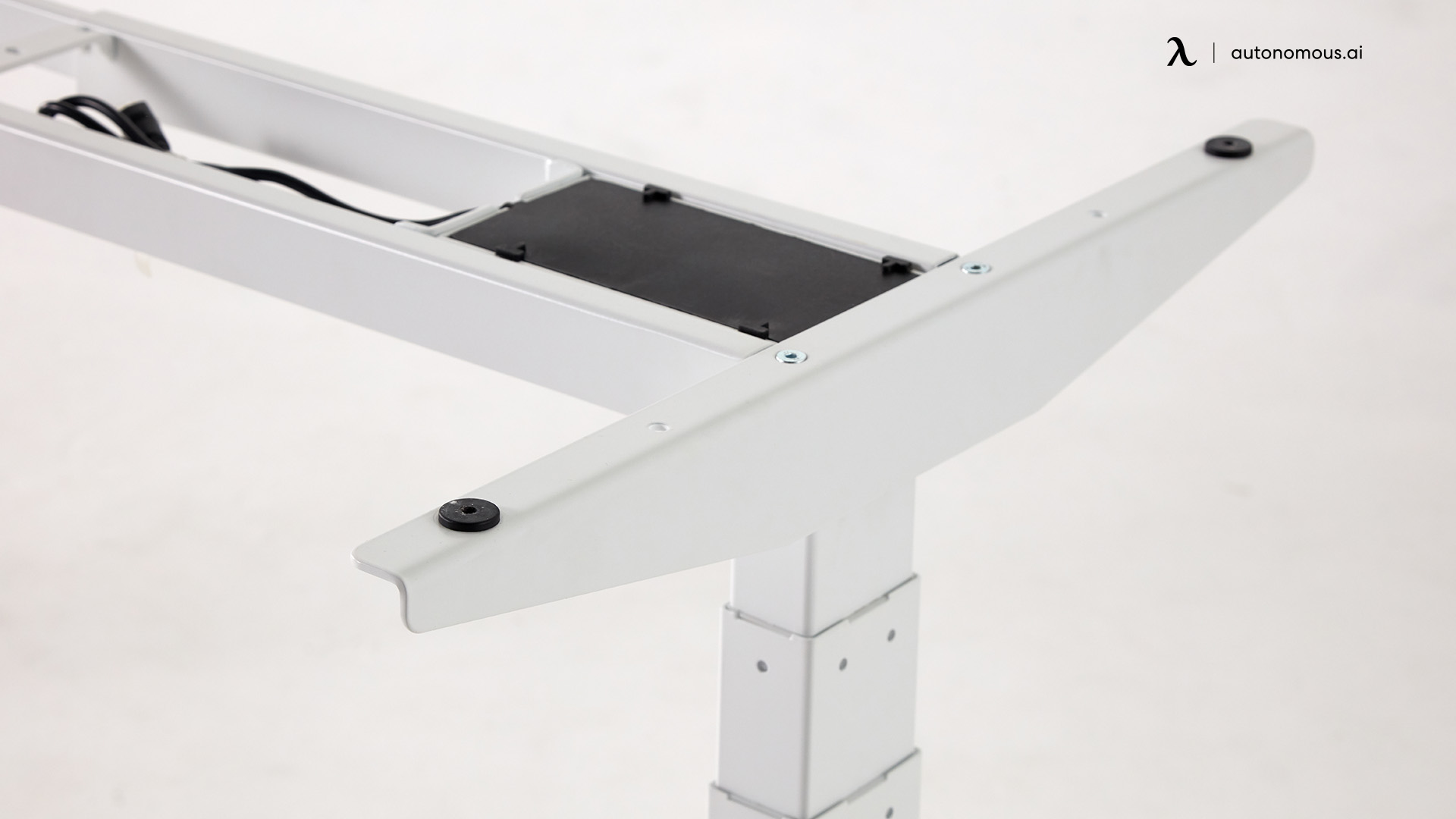
Types of Desk Lift Mechanisms
The standing desk hardware or adjustable desk mechanism that comes together to create a lift mechanism can be arranged to give one of three lift types. These are electric, mechanical, and converters. All three are covered in detail below, which should allow you to contrast them and select which you think would be most appropriate for your needs.
1. Electric Desk Mechanism
Pros | Cons |
Easy to use with a button press | Higher cost |
Quick and smooth height adjustments | Can be prone to motor issues after long-term use |
Often includes programmable presets | Requires power source |
Low maintenance |
Best For:
Electric desk mechanisms are ideal for those who want maximum convenience and frequent adjustments. They’re great for individuals who need to quickly switch between sitting and standing positions, or those who work in an environment where multiple users share a desk and need flexible height settings.
Key Features to Know:
- Standing Desk Motor: The motor is the core component of electric standing desks, enabling automated height adjustments. More details on the motor can be found in our complete guide of the standing desk motor.
- Resetting a Standing Desk: If your desk isn’t adjusting as expected, resetting it may help. Instructions on how to reset a standing desk are available.
- Using Your Standing Desk: For optimal use, it's important to set up your standing desk correctly. Our tips for using your standing desk like a pro cover best practices to ensure ergonomic comfort.
- Setting Presets: Many electric standing desks offer height presets for convenience. Information on how to input and manage these presets can be found in the guide on setting standing desk presets.
- Locking and Unlocking: Some desks come with a locking mechanism for height adjustments. Details on how to lock and unlock a standing desk are outlined in our guide on how to lock and unlock a standing desk.

2. Manual (Mechanical) Desk Mechanism
Pros | Cons |
Affordable | Requires manual effort to adjust |
Simple and reliable design | Slower adjustment time |
No power needed | Not ideal for frequent height changes |
Typically more durable than electric models |
Best For:
Manual (mechanical) desk mechanisms are ideal for those who want an affordable option and don’t mind putting in a little extra effort to adjust their desk. They’re great for people who don’t need frequent height adjustments or an electric motor. For those considering a non-adjustable standing desk, or those specifically interested in manual options, check out our guide on the best manual standing desks.
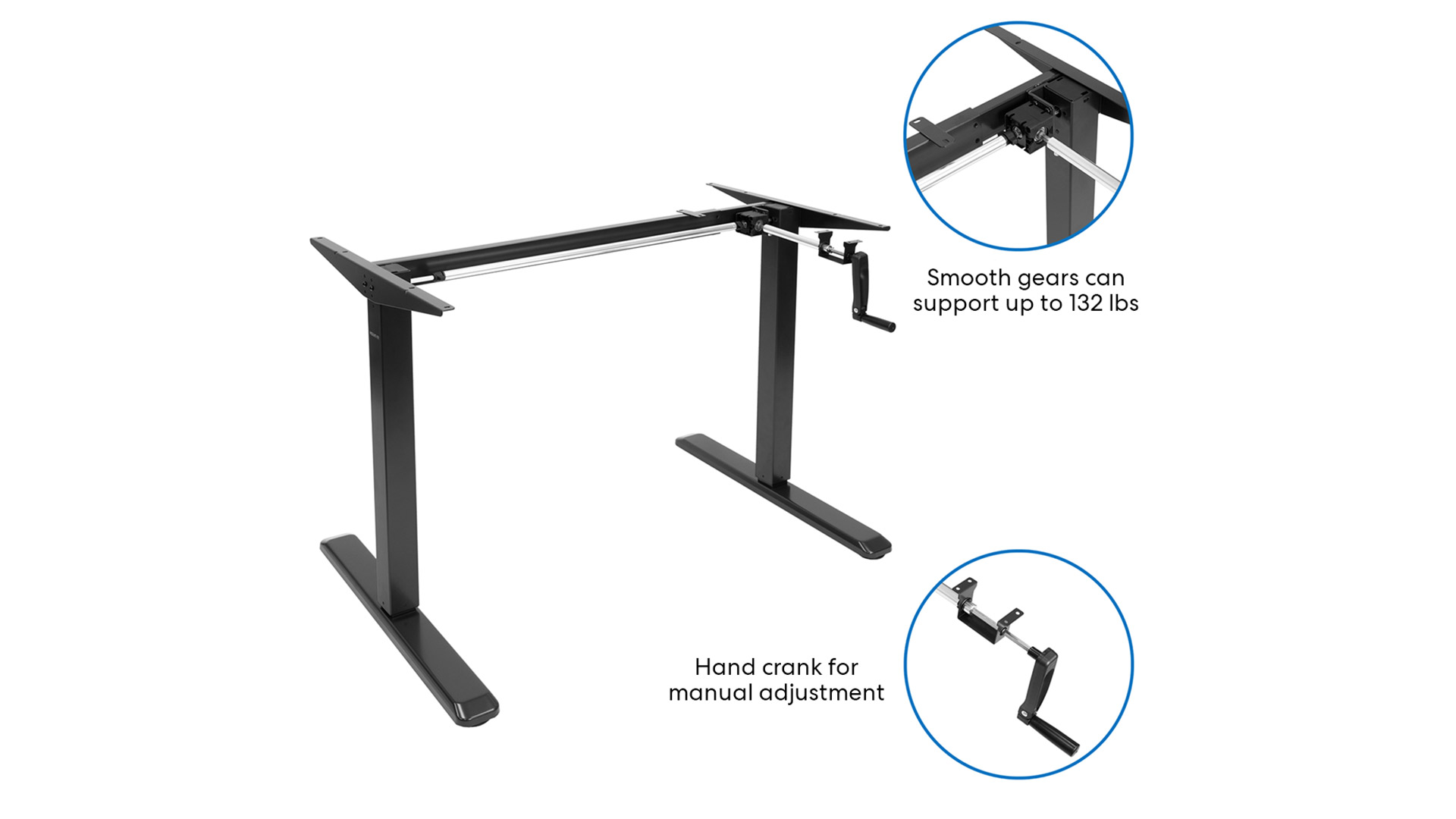
3. Desk Converters
Pros | Cons |
Low-cost option to convert traditional desks into standing desks | Limited space for equipment |
Portable and compact | Can reduce desk stability |
Doesn’t require desk replacement | May require more physical effort to adjust for height changes |
Best For:
Desk converters are perfect for individuals looking for a low-investment solution or those who need portability. If you already have a traditional desk and are looking for an affordable way to convert it into a sit-stand workspace, a converter might be a great choice. It’s a practical solution for small spaces and temporary setups.
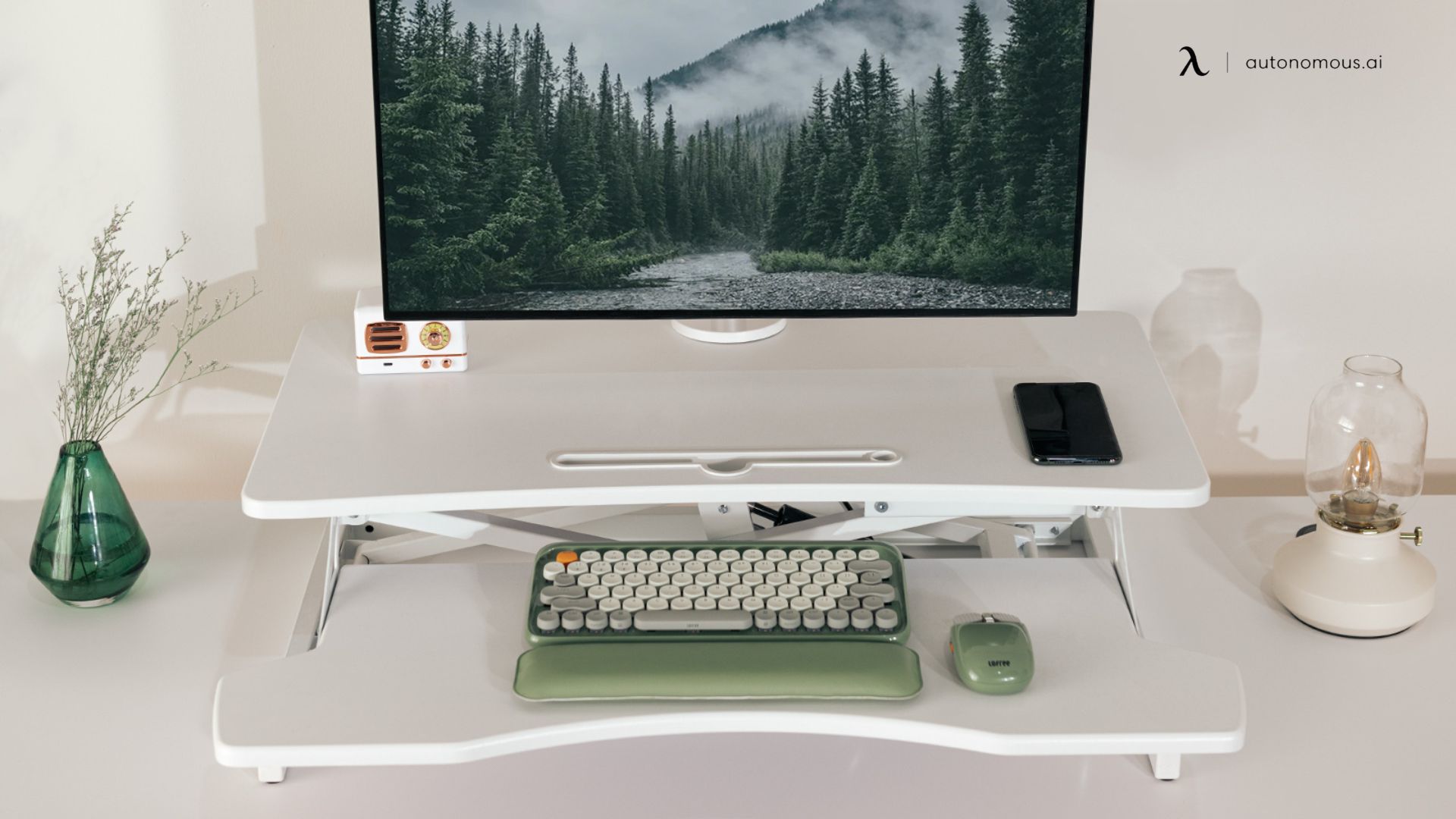
4. Pneumatic Desk Mechanism
Pros | Cons |
Smooth and effortless height adjustment | Limited height range |
Doesn’t require electricity | Less precise than electric models |
Simple design | Not ideal for heavy setups |
Best For:
Pneumatic desk mechanisms are best for users who need quick, effortless adjustments without relying on electricity. If you don’t need precise adjustments and are more concerned with smooth operation, pneumatic desks are a good choice. They’re ideal for smaller workspaces or users who only need occasional height adjustments.
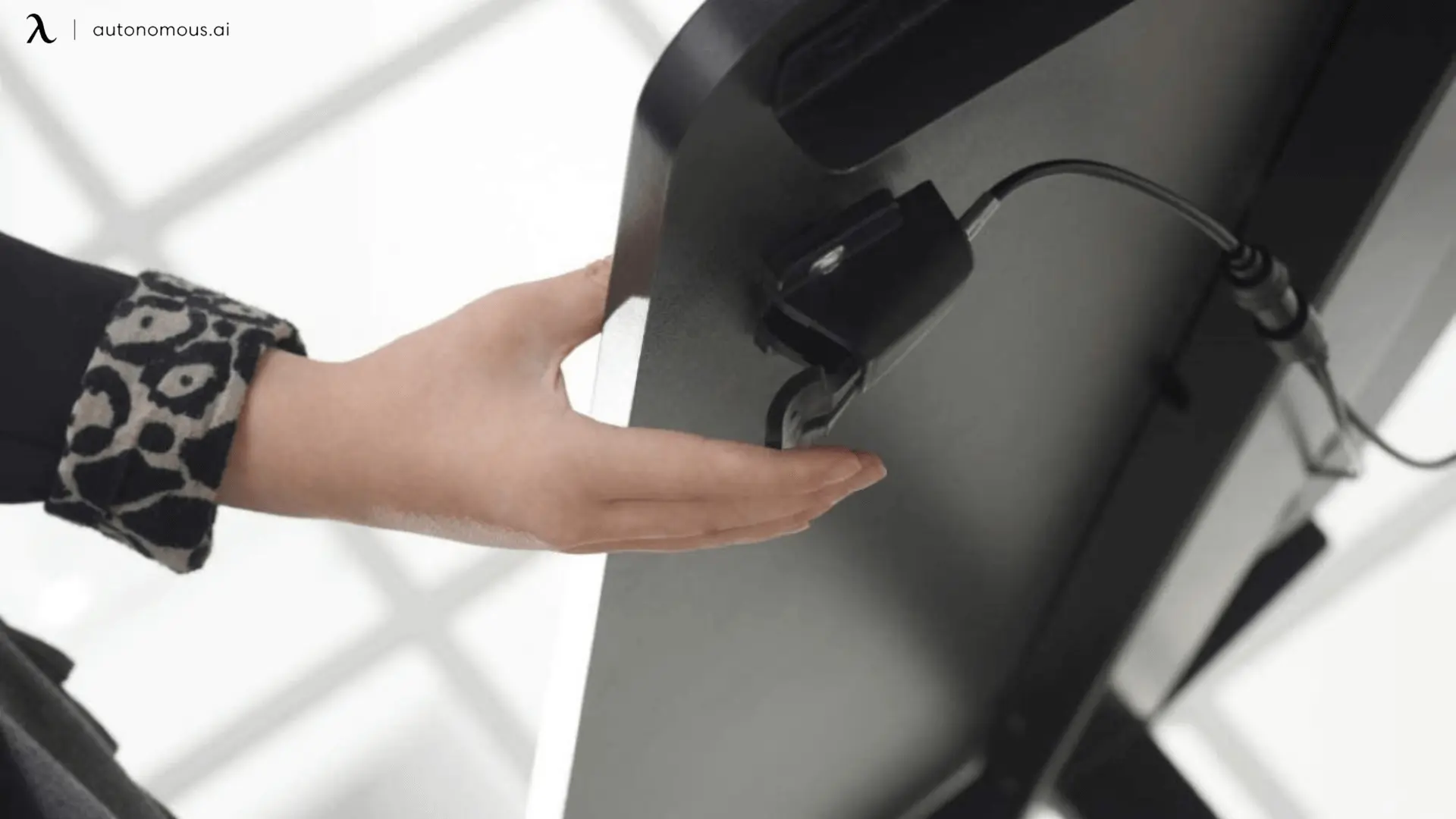
5. Hydraulic Desk Mechanism
Pros | Cons |
Smooth and stable adjustments | Rare in consumer desks |
Typically quieter operation | More expensive |
Often more robust in design | Not as customizable as other options |
Best For:
Hydraulic desk mechanisms are ideal for users who prioritize smooth and stable adjustments with a premium design. These desks are best suited for individuals looking for a quieter operation, though they are less common and can be more expensive.
6. Counterbalance Desk Mechanism
Pros | Cons |
Balanced height adjustments with minimal effort | Less precise than electric models |
No electricity required | Limited height range |
Durable and simple | Not as common in market compared to other types |
Best For:
Counterbalance desk mechanisms are best for users looking for a simple, low-tech solution with balanced, easy adjustments. These desks don’t require electricity and are ideal for individuals who need a durable, straightforward height adjustment system.
What to Pay Attention to in an Electric Standing Desk
Now that we’ve covered the different types of adjustable desk mechanisms, let’s focus on electric standing desks and what to look for when choosing one. You might be wondering, why is the electric option singled out?
Well, electric desks tend to be the most convenient and sit at the center of some of the best standing desk options on the market. These desks are incredibly solid choices that deserve your attention, but it's important to understand what makes them stand out.
Let’s dive deeper into the key features you should pay attention to when shopping for an electric adjustable standing desk.
1. Base Width
When considering a standing desk, base width refers to how wide the desk frame is, which can influence how much space you have for your workspace. Some desks even offer the option to adjust the base width horizontally, in addition to the vertical height adjustment. This flexibility can be especially useful when pairing your desk with custom tabletops.
If you're interested in a L-shaped standing desk frame, base width is especially important since these desks are designed to maximize corner space.
For a more general solution, explore the available options for a standing desk frame in our guide.
A wider base is typically associated with better stability. If you're looking for the most stable standing desk, especially for heavy setups, you may want to consider a 4-leg standing desk.
If you need additional workspace, a double standing desk might be the right fit for you. For more compact options, consider a 55-inch desk or a 70-inch desk for a more efficient setup.
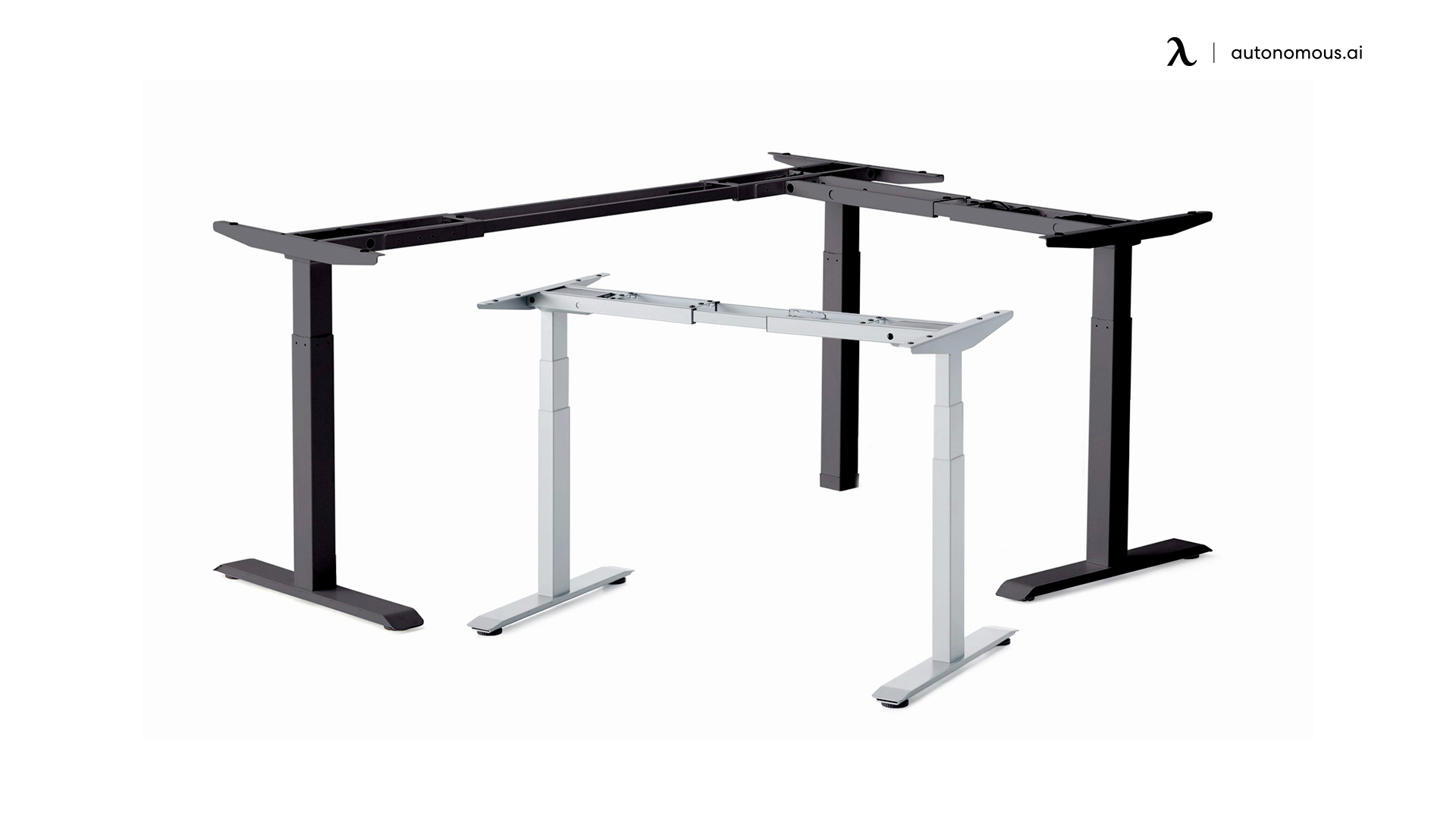
2. Height Range
Height range is one of the most important features to consider in an electric standing desk. Just as the base width defines horizontal boundaries, the height range defines the vertical ones.
A good height range is crucial to ensuring that your desk accommodates both sitting and standing positions comfortably. This feature is especially important for people who need to adjust their desk multiple times a day, such as those who work in shared spaces or hot-desking environments.
For those who are on the shorter side, finding a standing desk for short people with an adjustable height range is key to comfort. Similarly, if you're a gamer and need a gaming desk adjustable height desk, height adjustability is essential for proper ergonomics during extended gaming sessions.
If you need more height adjustability, a tall standing desk is the best option, providing comfort for taller individuals. For smaller workspaces, a thin standing desk might be more suitable while still offering an adjustable height feature.

3. Weight Capacity
Weight capacity is another critical factor to consider, especially if you plan to use your desk for heavy equipment like multiple monitors or large desktop towers. The weight capacity indicates the maximum load your desk can handle while still functioning smoothly.
Most standing desks can handle around 200 to 300 pounds of weight, but some models, like Autonomous’ corner standing desk, can support up to 330 pounds. Be mindful that if you’re near the maximum weight capacity, the desk’s mechanism may slow down.
If you're using a dual monitor standing desk or a 3 monitor standing desk, you’ll need a desk with a higher weight capacity to avoid stressing the mechanism. For a more lightweight and portable option, a laptop standing desk is a great fit.
For a smoother experience, choose a sturdier design with a higher weight capacity, such as a heavy duty standing desk, to ensure that your desk can handle your setup without compromising on functionality.
If you need help setting up your desk properly, check out our standing desk setup guide to get the most ergonomic and efficient configuration.
4. Leg Stages
If you examine the telescopic section of the electric standing desk, you’ll notice it’s divided into stages. Most desks come with two-stage or three-stage legs.
Three-stage legs generally offer greater stability and a wider height range than two-stage legs. This is especially important for users who require more stability, such as those with heavy equipment or those who switch positions frequently.
If you’re building a custom setup, standing desk legs offer flexibility in choosing your own components, including your desktop and other accessories. Alternatively, if you prefer a more hands-on approach, a DIY standing desk offers complete control over materials and dimensions.
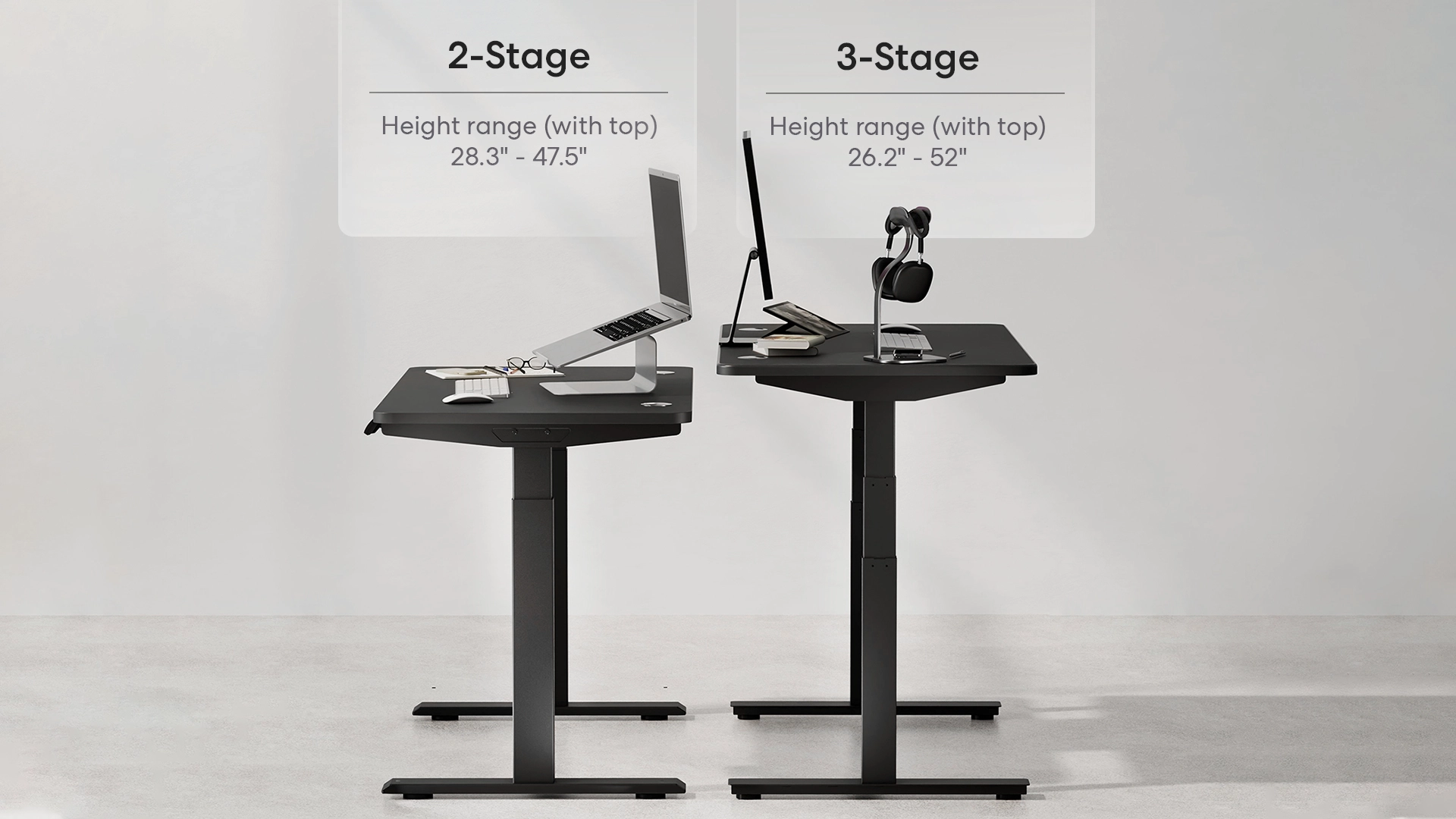
5. Shape and Number of Legs
When it comes to the shape and number of legs, there’s no one-size-fits-all answer. The design of your desk is often a matter of personal preference.
Larger desks typically have more legs. For example, L-shaped standing desks, like Autonomous' corner standing desk, often have three legs instead of two. These desks are great for users who need more surface area, want to optimize corner space, or have multiple pieces of equipment.
If you're interested in a large L-shaped standing desk, there are plenty of great options to choose from.
Additionally, if you want to give your desk a polished look, standing desk leg covers are a simple solution to conceal the legs and improve aesthetics.
6. Tabletop
While the mechanism handles the height adjustments, the tabletop is the most important part of the desk for your daily work. You want a durable, stable surface that will support all your equipment without warping or wearing out quickly.
Look for desks with strong materials, such as MDF wood with a nice finish. This material is durable, stable, and resistant to wear and tear. If you're interested in a wood standing desk, it’s an excellent option for both durability and aesthetic appeal. Additionally, the size of the tabletop should be proportionate to the width of the desk legs, but keep in mind that some desks have off-centered legs, allowing for a larger desktop area.
If you're looking for something more eco-friendly, consider a bamboo standing desk, which offers a sleek, sustainable option. For those who prefer a classic or high-end look, an oak standing desk or walnut standing desk could be the ideal fit.
A spacious tabletop gives you more real estate for your equipment, ensuring you have enough room to work comfortably.
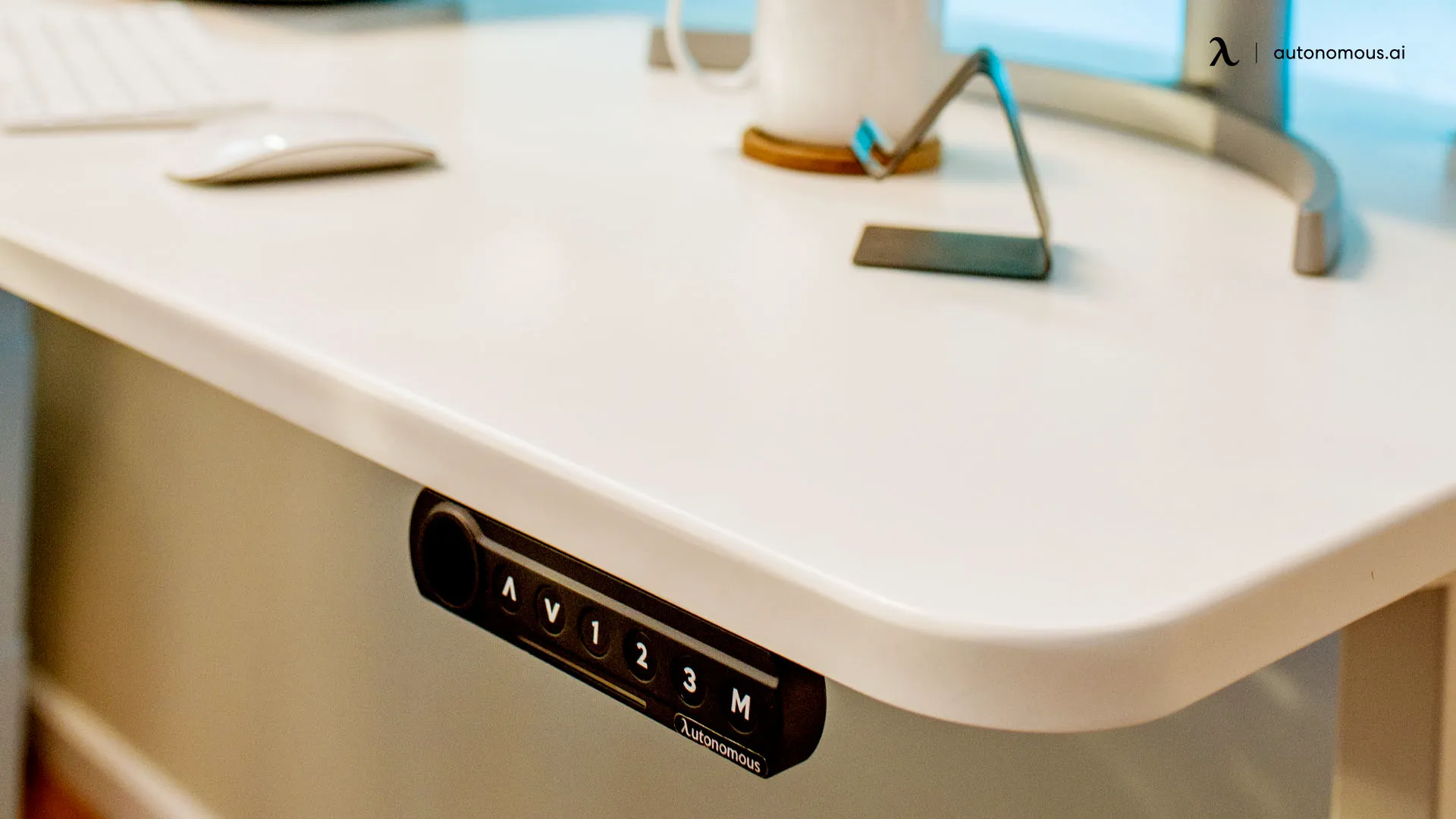
Final Remarks
Choosing the right adjustable desk mechanism is crucial to creating a workspace that’s both ergonomic and efficient. Electric standing desks, with their convenience and smooth adjustments, are a popular choice for many, but it’s important to consider the key features like height range, weight capacity, and base width to ensure the desk fits your specific needs.
Whether you’re working from home or outfitting an office, the right desk can significantly improve your posture, productivity, and overall well-being. Take your time to evaluate the features that matter most to you—whether it’s easy adjustments, added stability, or customizability—and you’ll be on your way to building a workspace that works with you, not against you.
No matter which type of desk mechanism you choose, remember: A well-chosen desk is an investment in your comfort and health, making it an essential tool for both work and well-being.
Spread the word
.svg)






